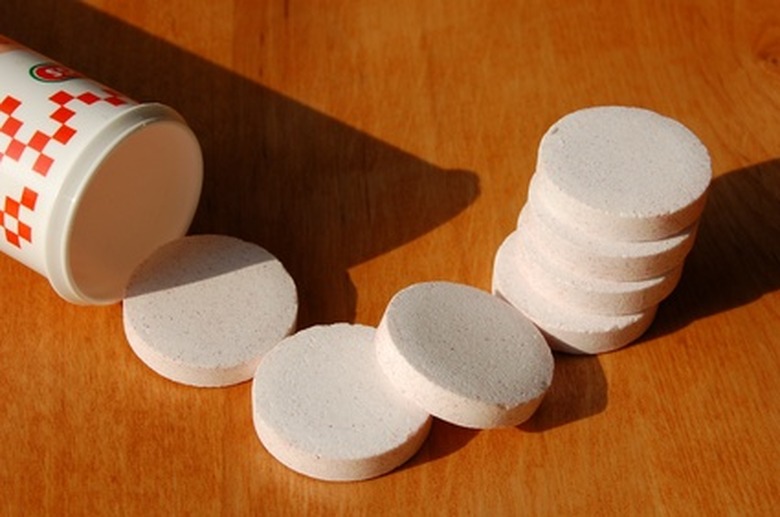How To Calculate The Volume And Circumference Of A Circle
The circumference of a circle is directly proportional to its radius. The ratio between a circle's circumference and its diameter is pi, a constant that equals approximately 3.142. The circle's diameter, in turn equals twice the radius. A regular solid that has a circle as a face is called a cylinder. Like all geometric prisms, a cylinder's volume is the product of its cross-sectional area and its length. The cross-sectional area is the area of its circle, and you can calculate it from the circle's radius.
Step 1
Multiply the circle's radius by 2 to calculate its diameter. For instance, if the radius equals 6 inches, compute as follows to determine the diameter: 6 x 2 = 12 inches.
Step 2
Multiply the diameter by pi to get the circle's circumference: 12 x 3.142 = approximately 37.7 inches.
Step 3
Find the square of the radius: 6 x 6 = 36 square inches.
Step 4
Multiply the answer determined in Step 3 by pi to get the circle's area: 36 x pi = 113 square inches.
Step 5
Multiply the circle's area by the cylinder's length to obtain the volume. If the length is, for instance, 10 inches, then compute as follows: 113 x 10 = 1,130 cubic inches.
Cite This Article
MLA
Menezes, Ryan. "How To Calculate The Volume And Circumference Of A Circle" sciencing.com, https://www.sciencing.com/how-7906533-calculate-volume-circumference-circle/. 7 August 2017.
APA
Menezes, Ryan. (2017, August 7). How To Calculate The Volume And Circumference Of A Circle. sciencing.com. Retrieved from https://www.sciencing.com/how-7906533-calculate-volume-circumference-circle/
Chicago
Menezes, Ryan. How To Calculate The Volume And Circumference Of A Circle last modified March 24, 2022. https://www.sciencing.com/how-7906533-calculate-volume-circumference-circle/
